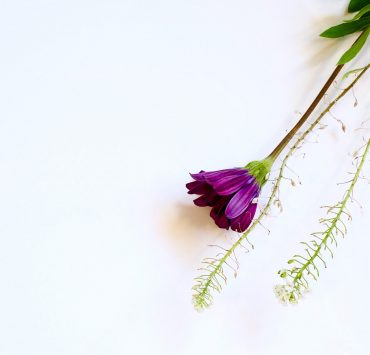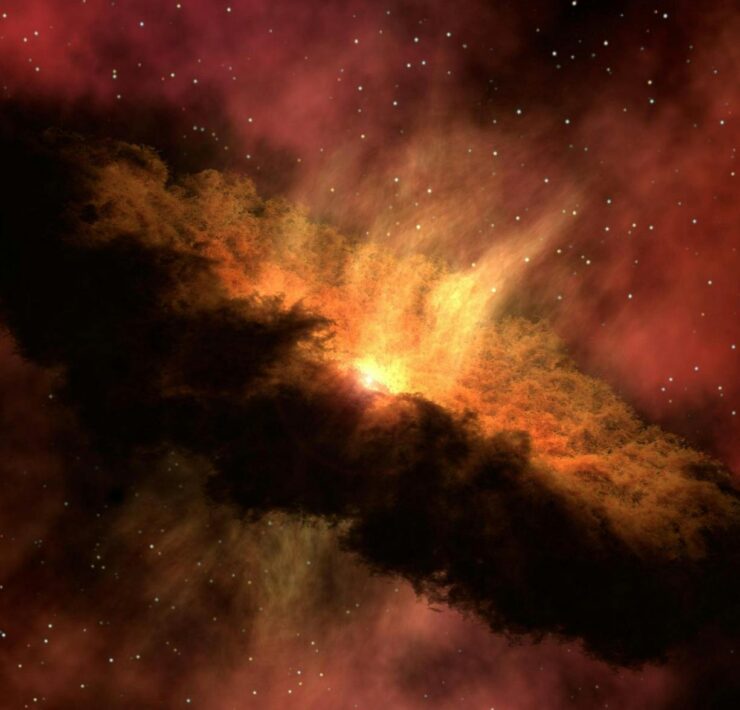Road Trip!

Chioma Phillips is the Editor of Msingi Afrika Magazine and…
Driving about 530 kms or eight hours from Nairobi to Marsabit was nothing short of fun, even though hectic. It’s such a beauty to behold the African landscape as you make your way through the miles, on a mission to bring to fulfillment the mind of God.
THE DRIVE FROM NAIROBI TO MARSABIT
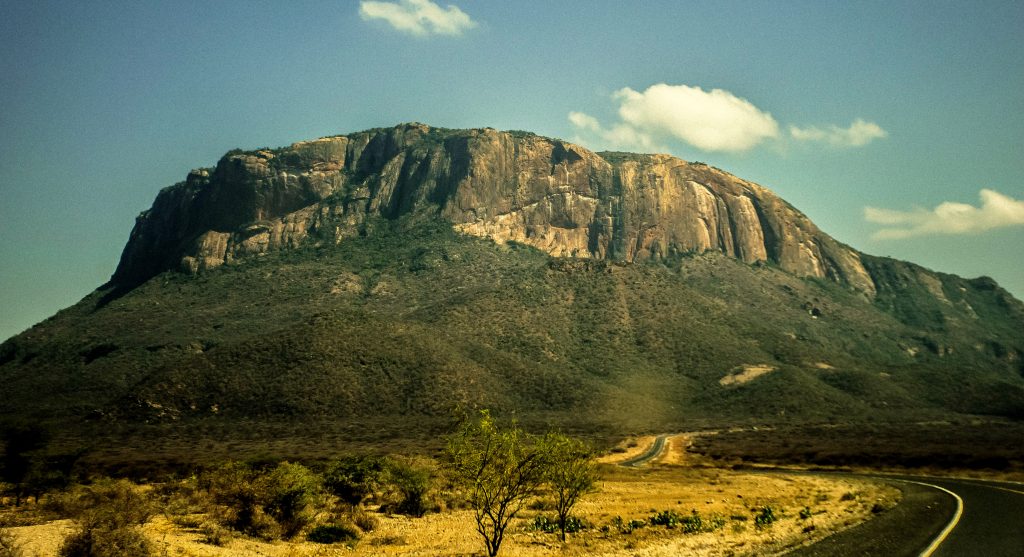
FROM THE START
Road trips are exciting! You toss your things in the car and head off for hundreds of kilometers in one direction or the other seeking adventure and the thrill of new experiences and acquaintances. Excited and curious about what you will find around the next corner… mountains and valleys and beaches, spectacular views and interesting people with stories that thrill.
The thrill is even greater when God is in the story and when HE has commanded the journey.
Now you’re not just travelling to get to the end of the rainbow, no! Now you’re a secret agent on a mission to save the world!
Some moons ago, when my husband Samuel and I just got married, the Lord impressed it upon my husband’s heart to travel to Marsabit, which is in the north of Kenya, to carry out a rather unusual assignment. It was unusual in the sense that, he had shared with me several of his God-given assignments and none was as weird as this. Imagine travelling for more than 8 hours per leg (to Marsabit and back) just to write a message from God on the dusty desert ground. Quite unusual! This bore witness with me though, so we were on! I was born in Kenya, he wasn’t, but this was a virgin mission for both of us and I was to drive! Long distance was never my thing but God was determined to shatter those limitations for me using my longest drive yet, a 1060km round trip filled with many unknowns. So we did our research. Which fuel stations to use and which ones to avoid. God sent us a mechanic who lent us a 20lt jerry can to fill in Nairobi, just in case we ran out of ‘good’ fuel along the way. We learnt that the road had recently been transformed from being a 122km car killer where drivers would spend hours travelling, in fear of bandits, to a highway of pure driving heaven. (Just keep an eye out for the wildlife… and the cattle).
We found a hotel online and made our bookings. Packed our bags, fueled the Chariot of God and set off one morning at four am towards Marsabit.
RIDE BEFORE DAWN
We navigated our way very carefully through the dark winding roads of Makuyu, Karatina – as all the regular road users were busy flying past us of course, unhampered by my inexperience, nerves and discomfort. Anyway, by sun up we were whispering our way past Nyeri and heading up towards Lisoi and Laikipia.
HERE COMES THE SUN
The sunrise was breathtaking. It was as if a glass cloche was being gently lifted up off the earth all around us and light, once again, embraced our weary souls. Off we sped as police checkpoints began to be set up at various points, like luminous yellow punctuation marks along a very long winding tale written in black tar.
We used the Timau route, which was a surprise for both of us, not just because of the evil and wicked mountainous speed bumps that someone who appeared (to my eyes at the time) to want to do to me harm had erected. They were made mostly of large jagged rock and glued together with soil with the sharp edges of the granite rock pointing upwards at the bottom of the car like giant sharks’ teeth. I nearly wept as we crossed the six or so of them. (I cried to God for help in Marsabit at the thought of the return journey via the evil teeth of Timau).
I digressed. Apologies.
The route was also a surprise because we both had never set eyes on the leeward side of Mt. Kenya. It was dry and dusty, dull colored and … rather disappointing to look at. I guess this is why it has never been celebrated in picture as it’s more glamorous snow-capped windward face. Surprised at the contrast, we drove on, took the left hand turn towards Isiolo, where we paused to refuel. No. It wasn’t on our research list. God’s journey. God took over from the wisdom of man.
I forgot to mention, I didn’t know where I was going, but didn’t want to back down from a challenge. So I prayed and asked God to help me not to lose his son in the wild. He came through. Along the way He gave me directions like: “keep the sun on your right shoulder”, “turn here now!” it was awesome!
We set off from Isiolo at about ten am. Heading into vistas unknown. It was when we got to Archers Post that I started to recognize names from my school text books. “Oh! Ewaso Nyiro river!” “Oh! The Samburu, Borana and Rendille!” God bless my patient husband.
We were both taken by how dry it was. There had been reports on the news about the drought and cattle dying… we saw their white bones and skulls and rotting frames by the side of the road.
After Archers Post, probably the most exciting and recognizable feature was Mt. Ololokwe in a granite landscape of unusual giant rock sculptures that I believe God is enjoying carving, Ololokwe stood out as a huge monolith welcoming us to this vast terrain in Samburu. Known intimately by the locals, inviting and mysterious to the newcomer. The other features looked like long tall men, still others like giants laying down on their backs looking up to God… this Ololokwe is a like a bold declaration of something grand to come.
The road was beautiful to drive on. Very few cars. The only annoyance being the herds of goats and cows that tended to stray too close to the edge of the road. You’re on high alert.
Every 50 or so kilometers we met herdboys out with their cattle who kept running towards us while pointing at empty plastic bottles and shouting. Eventually we figured it out, they were asking for water. We didn’t really have a lot on us and balancing the need to stay hydrated while on the road, we eventually stopped for somewhere along the way and shared some of what we had. Along with some bread. They seemed accustomed to this so we figured that travelers who had gone before us had begun this little custom.
NO GUNS, PLEASE!
Along the way we spotted a Borana man asking for a lift, we considered it for a few moments until we saw his AK47 draped casually on his arm. And then, you guessed it … we didn’t pick him. Safety first… we opted out and left him hoping he would get a matatu or other vehicle occasionally plying the route.
MAKE WAY FOR THE WINDS
If you do consider making this trip, you must be on the alert for the crosswinds along this road all the way up to Moyale. Please pay attention to the signs, keep your windows closed and watch your speed.
The first time we were struck by them, the chariot actually rocked slightly. That’s how powerful they are. So don’t play. Other than that, this leg of the journey is pure joy to drive.
Our journey took us past dry riverbeds such as the Serolevi (which we explored on a later trip to the gates of Marsabit), we passed many such dry riverbeds en route, so much so that arriving in Marsabit town caught us off guard.
MARSABIT TOWN
Marsabit is beautiful and cool and green and it had rained just a few days before so it was even wet.
The town is situated on Mt. Marsabit and is such a welcome oasis in a barren and dry landscape.
We got there at about 1 or 2pm. Exhausted in part because we had barely slept the night before. We drove up and down looking for our hotel. Eventually we found it and went and exhaled. Best instant shower I have ever had anywhere. Ever.
The town continued to shock us because it got colder and mistier than Limuru. Twice, by night and early in the morning, my husband went to the rooftop to pray and came back COLD!
In the morning he told me that it was so misty he could barely see in front of him.
I must not have been paying attention in class because this all came as a complete surprise to me. Lol. What a delight.
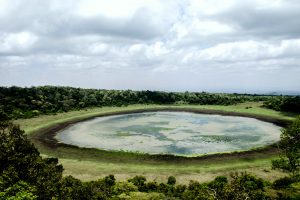
THE BOWL OF GREEN SOUP
The next day we attempted to go into Marsabit National Park and travel up Mt. Marsabit in the chariot. God bless that game ranger, he managed to restrain himself from laughing at us in our built-for-the-streets low-rider. It was when we took his advice and hired a local of Indian descent, with a 4×4 landcruiser, whose family has lived in Marsabit for generations, that we understood why the ranger wouldn’t let us in using our chariot. That road would have ripped the bottom off the mighty brave chariot. It is steep, it had rained and it had eroded. When our guide and driver got out to engage his diff lock and got back on to use his little gear we realised we had finally hit the big time! The road is as narrow as some of those in Aberdare mountains and just as overgrown. Thickets conceal both leopards and Samburu herders and their cattle. Shy Lesser Kudu peek out from time to time wondering who came to disrupt their peace.
After the first hill our eyes were drawn to Sokorte Diko watering hole and plain below us where Marsabit Lodge stands. 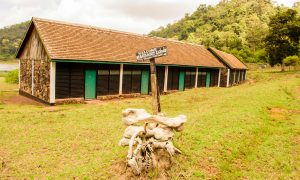 A herd of egret-adorned buffalo were grazing nearby watchfully assessing these newcomers to see whether they would need to engage their hard heads or not. Based on the number of skulls lying around, I am pretty hopeful we would have survived any onslaught. Maybe?
A herd of egret-adorned buffalo were grazing nearby watchfully assessing these newcomers to see whether they would need to engage their hard heads or not. Based on the number of skulls lying around, I am pretty hopeful we would have survived any onslaught. Maybe?
Anyhow we didn’t stick around long enough to find out. We were movin’ on up to view the striking Lake Paradise, or as Sam describes it, the bowl of green soup – a crater lake nestled deep within a forest in Mt. Marsabit. We stood where a herd of elephants had passed by recently, according to our guide. Despite the relative lushness of the mountain, the waters of the lake were quite low, a product of the season – we think. A different herd of buffalo were hundreds of meters below us wading into the very middle of the lake or grazing along the edges. We also ‘happened’ to arrive in the season when the butterflies were emerging from their chrysalis. In a magnificent display, these triumphant ones who had completed their transformations to enter into maturity were dancing on the wind in glorious celebration of victory.
We left shortly after … the negotiated fee had expired, so we could go no further. Down the mountain and back to the well rested chariot we went with glad hearts. Thankful for the experience.
REST IN THE NORTH
We hopped back in the silver chariot and drove a short distance along the route Moyale to complete our mission. It boggles the mind how quickly the terrain is transformed from lush and green to dry and barren along this stretch. Literally as you leave the town, you’re in a different world. I don’t know how God does it. A helpful Administrative police officer recommended that we go to the Gof along the way. Which turned out to be what seemed to us to be a huge volcanic crater, wide and deep. There on the edge of this deep dry hole Sam faithfully wrote the message he was given: “The Lord is Here”. Which is the name of the New Jerusalem (Ezekiel 48:35). It also is the meaning of the name Jehovah Shammah. The New Jerusalem being the final reality that God is establishing where He comes to dwell in the midst of His people and He alone is their Light and their Temple. And we made the prayers and declarations to establish His will in the land and nation of Kenya and in the world. Zech 6:8 And He called to me, and spoke to me, saying, “See, those who go toward the north country have given rest to My Spirit in the north country.” Alleluia!
We drove back to the hotel with the wonderful instant shower and made our preparations to leave for Nairobi the following day. We topped up from our jerry can and fueled in the forbidden land. Like I said, God’s journey. And the next morning, after a relaxed breakfast, we made our way back to a different land, over the goring shark’s teeth, to Nairobi, where the faithful chariot died as we approached Kenya Broadcasting Corporation along Uhuru Highway (the charging system had failed). After giving her battery a chance to revive and managing to move only a few meters before it died again, a recovery guy found us, left us (price was not right) and then came back for us (it was a long weekend after all) and we were towed home safely having used up the last coins we had in our budget and so grateful to God for bringing us all the way.
What's Your Reaction?
Chioma Phillips is the Editor of Msingi Afrika Magazine and the host of Msingi Afrika Television. Her hope is to see the Truth shared, with all who will listen, for the transformation of the people and the continent of Afrika - and the world. She believes passionately in the critical role that Afrika and Afrikans have to play on earth right now and hopes to ignite the spark that will cause them to see and believe who they are, so that they can live out their Truest lives for the remainder of their days.










